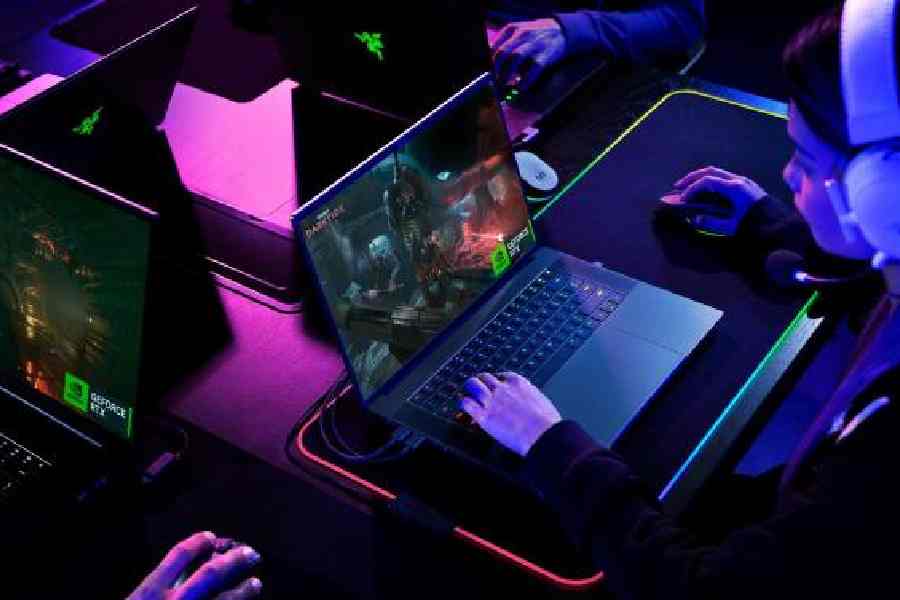The talk of the tech world — Wi-Fi 7, the successor of Wi-Fi 6E. Many are talking about it and devices that support Wi-Fi 7 are coming in fast. Many of the flagship phones that launch this year will support Wi-Fi 7. So, should you future-proof yourself if you are in the market looking for a router, like the one from TP-Link or Netgear Nighthawk RS700?
At the ongoing CES 2024, Wi-Fi 7 is driving the conversation as much as AI. The first laptops equipped with the technology are gaming laptops, which makes sense as Wi-Fi 7 allows a device to connect to your router on multiple bands, giving the machine options when it comes to where to funnel its packets. So if the 5GHz band is at capacity, data can travel through the 6GHz pipe, and vice versa. The result is slower latency when you’re on a busy network.
How is it different from Wi-Fi 6E?
The seventh generation of Wi-Fi promises big improvements over Wi-Fi 6 and 6E and will offer speeds up to four times faster. There are advances to reduce latency, increase capacity, and boost stability.
Wi-Fi 6 has been out for a long time and 6E mainly added the 6GHz band, which is supposed to give you much faster speeds and have less interference issues because most other devices are on the 2.4 and 5GHz frequency. So if you have many neighbours, having that 6GHz band is helpful.
Wi-Fi 7 takes the game to a new level. The maximum data rate jumps drastically when compared to Wi-Fi 6 and 6E. There are multiple reasons for the big jump. The first one is the 320MHz bandwidth, which doubles the bandwidth. To make it simple, it’s like having a two-lane freeway compared to a four-lane freeway so you can fit more data. You can pack more data into each vehicle that is driving on that freeway. You have 16x16 MU-MIMO (multi-user multiple-input multiple-output), so you have double the simultaneous connections that are possible.
If you have interference, instead of that block being wasted, it can resume really quickly. The best thing by far is the multi-link operation. Ever since we had multiple Wi-Fi frequencies, you can only connect to one of them at a time but with Wi-Fi 7 you will be able to connect to multiples and then your data will be sent through whichever frequency is working the best, making it a lot more seamless.
There are few Wi-Fi 7 devices that are out yet, so why would you even buy one of these? Take the example of a security camera that, for example, is far away from the router connection. If somebody is stealing my package, the video quality from the camera will be terrible because the reception and range is bad. Most people don’t upgrade their Wi-Fi routers for five to seven years. So you can buy the latest router at the moment so that devices catch up.
The benefits
The benefits of Wi-Fi 7 are numerous — high-quality video and better Cloud gaming. If you get into AR and VR applications that require high throughput and low latency, such routers help. The seventh generation of Wi-Fi can handle congestion and interference better, offering better connectivity in areas with densely packed devices or neighbouring networks that overlap.
It will be beneficial for those interested in smart home devices. A bottleneck with wireless transmission is airtime. If the router is busy talking to one or more devices, others have to wait. There’s no point having sluggish home devices. Wi-Fi 7 tries to compensate for this by cramming extra data into what’s called a carrier wave.
Any examples of a Wi-Fi 7 device? Samsung Galaxy S23 Ultra. Wi-Fi 7 compatibility is there on the 16-inch Razer Blade 16 as well as the 18-inch MSI Titan 18 HX A14V. Also on the upcoming Lenovo Legion 7i and the more affordable HP Omen Transcend.
Should you buy it now?
If you are planning to spend a substantial amount on a Wi-Fi router in the coming weeks, upgrading to Wi-Fi 7 could be cost-effective. But if you want Wi-Fi 7 to solve all issues with your network, please wait.











